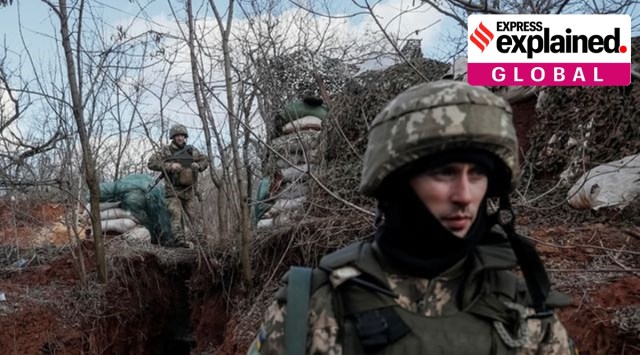Latest Comment
Post Comment
Read Comments
 Ukrainian service members are seen on the front line near the city of Novoluhanske in the Donetsk region, Ukraine February 20, 2022. REUTERS/Gleb Garanich
Ukrainian service members are seen on the front line near the city of Novoluhanske in the Donetsk region, Ukraine February 20, 2022. REUTERS/Gleb GaranichUS authorities have warned Russia not to invade Ukraine and urged both countries to return to a set of agreements designed to end a separatist war by Russian speakers in eastern Ukraine.
Here is a look at the agreements, which were signed in Minsk in 2014 and 2015.
MINSK I
Ukraine and the Russian-backed separatists agreed a 12-point ceasefire deal in the Belarusian capital in September 2014.
Its provisions included prisoner exchanges, deliveries of humanitarian aid and the withdrawal of heavy weapons, five months into a conflict that had by then killed more than 2,600 people – a toll that Ukrainian President Volodymyr Zelenskiy says has since risen to around 15,000.
The agreement quickly broke down, with violations by both sides.
MINSK II
Representatives of Russia, Ukraine, the Organisation for Security and Cooperation in Europe (OSCE) and the leaders of two pro-Russian separatist regions signed a 13-point agreement in February 2015.
Newsletter | Click to get the day’s best explainers in your inbox
The leaders of France, Germany, Russia and Ukraine, gathered in Minsk at the same time, issued a declaration of support for the deal.
It set out military and political steps that remain unimplemented. A major blockage has been Russia’s insistence that it is not a party to the conflict and therefore is not bound by its terms.
Point 10, for example, calls for the withdrawal of all foreign armed formations and military equipment from the two disputed regions, Donetsk and Luhansk: Ukraine says this refers to forces from Russia, but Moscow denies it has any forces there.
The 13 points were, in brief:


